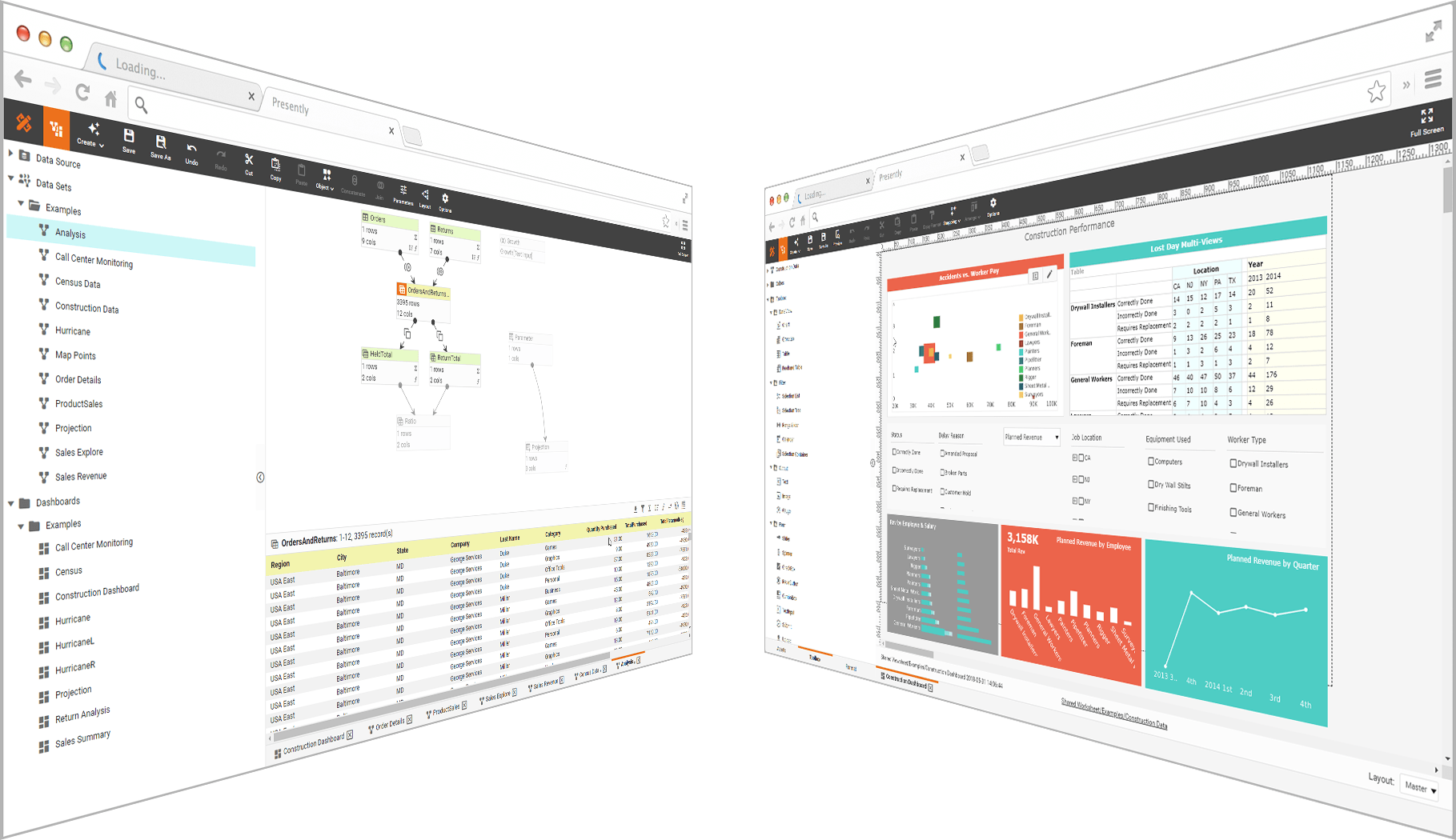InetSoft Information: What Is Data Mashup and What Are Its Benefits?
InetSoft’s business intelligence (BI) platform offers the unique feature of enabling end-users to combine disparate data sources that are not already mapped within a data warehouse schema. While traditional information management philosophy requires IT to be the gatekeeper of a “single truth” of enterprise data definitions, it is misguided to believe that this can ever be fully accomplished.
Moreover, by limiting end-user abilities, IT creates obstacles that prevent the full benefits of BI from being reached, and burdens itself with unnecessary change requests, work backlogs, and administrative overhead. This article defines the term ‘data mashup’ as it is used within the BI industry, discusses the shortcomings of traditional information management philosophy, and covers the benefits to end-users and IT departments, and businesses as a whole:
•What is data mashup?
•The fallacy of the single-truth
•Why end-users need data mashup
•Why IT needs data mashup
•Business case results of enabling data mashup
The Origin of the Term Mashup
The term ‘mashup’ emerged in the media-sphere within the past decade as people seized on the opportunities that new media software and hardware technologies provided. It became much easier to combine snippets of songs, video, or graphics from different sources to create new and diverse content. More recently, the concept and the term was expanded to include Web content applications including user-defined portals that can combine RSS feeds, other syndicated content, or even non-syndicated content to create a personalized high-value product for distribution and consumption.
Among technology providers, companies are now developing applications for the enterprise space to mashup Web-based content in the same way. This is useful, but limited. It does not create much more than a collage of pictures or objects because there is no further processing of that information; it is not treated as data.

What Is Data Mashup and What Are Its benefits?
Within the data analytics and BI industry, a small number of vendors have been creating applications that allow the combination or mashup of disparate data sources to be improvised without necessarily relying on a IT heavy step of ETL and data warehousing. This is now being referred to as “data mashup.” While combining disparate data sources is a common application for a data mashup, note that even in a single data source environment a mashup can be made by combining data from different tables in a way that had not been previously anticipated.
Data mashup empowers power-user, analyst, or business person who normally studies dashboards or sifts through reports with underlying data. Not only they can repurpose data like Lego blocks for unanticipated querstion. But they can also introduce new data with mash up and bring self-service to a different level.
InetSoft’s BI platform for data mashup uniquely takes this data agility concept to the ultimate level by fusing data mashup with business analytic in one web app. It allows end-users to iteratively create and define data mashups on their own and immediately visualize and analyze the resulting data blocks. Data mashup flexibility applies to two common use cases. First, users can combine data fields from data sources that have been intentionally exposed to the BI platform but not yet mapped together in a data schema. Second, the end-user can bring in his or her own data and combine it with those made available in the platform.

Many businesses express hesitation when first learning of this ultimate level of self-service and the commensurate power it places in the hands of the end-user. Isn’t this power dangerous? This reaction is due to the fallacy of the ‘single truth’.
The Fallacy of the Single Truth
A common problem in business is putting people in possession of a common set of data, or a “single truth.” The pain around this problem is, in fact, often the impetus to launch a BI project. The problem for an IT department is to make available one centralized and sanctioned source of data. Companies do need to standardize data definitions, develop processes for collecting data, and provide tools or platforms for end-users. This is the correct process for seeking and delivering the single-truth.
Unfortunately, this is as far as the single-truth mission can go. End-users can never be stopped from manipulating the sanctioned data, and they can never be stopped from creating mistakes with it.
Office software applications are ubiquitous in business and are often the primary medium of numbers-based communication. End-users can misuse fields or create incorrect formulas. IT can try to lock down user abilities in a BI platform, but even this is a futile effort. As soon as users port data into a spreadsheet or a slide, IT’s control is circumvented.
So, uncorrupted information can only be guaranteed up to a point, after which businesses must trust end-users to use it properly. Arguably, this has always been the case. Businesses must trust the judgment and abilities of their end-users and analysts. Otherwise, those individuals would not have access to data in the first place. Thus, along with this realization, one must reason that IT should focus single-truth effort on master/core data and no longer needs to fear giving end-users the power of self-service that end-user defined data mashup offers.
Contact Us for a One-on-one Mashup Consultation
| Next: Why end-users need data mashup |